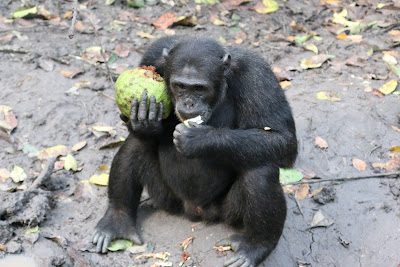Uganda is a nature gifted country and also known to be the
pearl of Africa. Uganda habours notable primate species of varied families and
characteristics, ranging from the most endangered mountain gorillas, the
human’s closest relatives - Chimpanzees and the most destructive – baboons. Primates in Uganda tend to dwell
in numerous ecosystems, mainly in dense tropical forests, montane forests,
swamps / wetlands and marshy lands, as well as savannah ecosystems.
Uganda is
also blessed to be the sole country in the world with the highest concentration
of primate species in a single location, which is Kibale forest national park, making it the proud “primate capital of Africa”.
Some of the remarkable primate species in Uganda include the
following;
The mountain
gorillas
This is one of most unique and iconic primate to Uganda’s
tourism because it is the country’s most visited attraction. The mountain
gorilla is the largest among all the primates and it lives within the Virunga mountains, as it prefers areas that are rocky and mountainous. In Uganda, gorilla trekking
is done only in Bwindi impenetrable national park and Mgahinga gorilla national
park all in the south west of Uganda bordering Rwanda in the south and DR Congo
in the west.
Chimpanzees
The chimpanzees are the closest to the humans, sharing 96.7%
of our DNA. The chimpanzee is so interesting with its human like behaviors, like
the eating habits, using the rocks to hit the corns so that it can eat the
inner part, bang tree stems to communicate with each other. In Uganda one can
have a remarkable experience of chimp trekking in Kibale forest national park with probably the
highest concentration of chimps in the region and in other locations like
mountain Rwenzori National park, Budongo forest reserve and others. But Kibale
is arguably the “primate capital of Africa”
L’hoest monkeys
This is sometimes referred to as the mountain monkey because
they live in mountainous forest areas, in small, female-dominated groups. These
primates are shy, terrestrial monkeys and are classified as vulnerable on the
IUCN list. In Uganda they are found in Bwindi impenetrable national park.
Golden monkeys
These species belong to
the old world monkeys, dwelling in the Virunga volcanic mountains of Central
and Eastern Africa, the Golden Monkey belongs to the family
with botanical name; (Cercopithecus Kandit).
Currently, Golden monkeys
are marked in the IUCN Red list as highly endangered primate species, said
to be thriving only in the south and north-west parts of Uganda and Rwanda
respectively.
Golden monkey trekking is carried out in 2 national parks, that is, Mgahinga gorilla national park and Volcanoes national park where less than 500 members are said to be habituated for visitation.
The Golden monkey’s
preferred habitats abound in bamboo and fruit environment, their movement
highly depends on the prevailing seasons. When the ripening season is on
(usually the Dry season), they tend to remain in that particular area, similarly when the rainy seasons that promote germination and
shooting of bamboo begin, Golden monkeys are prompted to interminably stay
in those areas. Thus an area with a multitudinous combination of both can
maintain a dense population of the Golden monkeys than any area with just
simple bamboo plantation(s)
The olive baboons
This specie is sometimes called the Anubis baboon. The specie of the baboon is the largest among baboon family, the olive baboons normally inhabits savannahs, steppes and forests and are very adaptable. They also live in troops of males and females between the number of 20 and 50 normally according to the availability of food. The olive baboon is probably Africa’s most destructive animals to human crops.
Patas monkeys
This is also known as the Wadi monkey. It is a ground
dwelling monkey that is found in the semi-arid areas of East Africa and West Africa.
The Patas monkeys live in big groups, known as troops of 30-50 individuals. This
unique specie can be found in large numbers of up to 100 in the Murchison falls
national park.
Uganda’s red-tailed and blue monkeys
The red tailed monkey is also known as the black-cheeked white-nosed monkey. It is usually black, red, or orange. It can survive in varied habitats and under different conditions and it is becoming endangered due to deforestation and over-exploitation through hunting and predation. This is locally known as enkunga in Luganda dialect and it is one of the smallest monkeys in Uganda. They can be found in Kibale forest national park, Queen Elizabeth National park and Bwindi impenetrable National Park.
Grey-cheeked Mangabeys
This is a tree-dwelling monkey with long limbs and a ruffled
tail that is longer than its body and distinctive mantle. This specie lives various
habitats like swamps or primary forests & secondary forests. This specie
also lives in groups of 5 and up to 30 individuals. They are commonly found in
Bigodi wetland sanctuary, Kibale forest, Semuliki wildlife Reserve and Bwindi impenetrable National park.






No comments:
Post a Comment